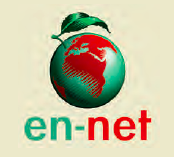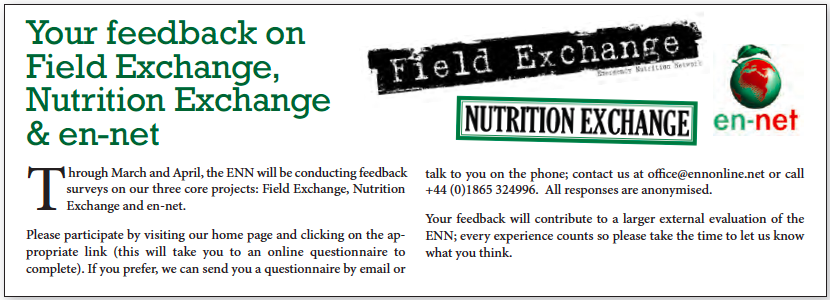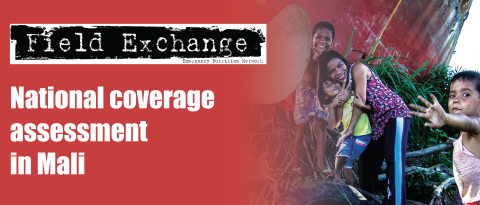En-net update
 By Tamsin Walters, en-net moderator
By Tamsin Walters, en-net moderator
Over the past four months1, 32 questions have been posted on en-net, generating 69 responses. Two upcoming trainings have been advertised alongside 47 vacancy announcements.
Several related discussions have occupied en-net around new thinking on implementing Community-based Management of Acute Malnutrition (CMAM) programmes. Triggers for deciding when to start a CMAM programme have been debated, including whether the use of Global Acute Malnutrition (GAM) rates for this purpose remain relevant in the context of Severe Acute Malnutrition (SAM) treatment being integrated into health systems, http://www.en-net.org/question/1489.aspx; the contexts in which moderate acute malnutrition (MAM) and SAM treatment could be temporarily merged, particularly in terms of interchangeable use of products; as well as considerations of how to treat ‘complicated MAM’ and whether it constitutes its own category, have arisen. Finally, a request was posted for global guidelines, an algorithm or a decision tree to assist decision-making on when to conduct different types of assessments in emergencies (e.g. MIRA, SMART, SQUEAC, RAM) and how to choose the most suitable methodology according to context and information requirements, http://www.en-net.org/question/1495.aspx
During the latter half of 2014, a number of agencies2 came together to consider simplified and temporary measures to expand their access to malnourished children under exceptional circumstances during emergencies. A draft guidance note was formulated3 to summarise agency experiences using expanded admissions criteria in Outpatient Therapeutic Feeding Programmes (OTPs) to extend treatment to MAM when Targeted Supplementary Feeding Programs (TSFPs) or an adequate supply of Ready-to-Use Supplementary Food (RUSF) were not available. The draft guidance note includes multiple scenarios, including when TSFPs are available but OTPs are not and RUSF might be substituted for Ready-to-Use Therapeutic Food (RUTF) where the latter is not available, as well as providing a temporary option for treating acute malnutrition when there is neither an OTP or TSFP yet established. Examples from Niger, Pakistan and South Sudan are included. This draft guidance note was discussed at the Global Nutrition Cluster (GNC) meeting in Rome in September 2014, and at the ENN Technical Meeting on Nutrition in Oxford in October 2014. The authors and lead agencies welcome feedback and hope to encourage more inputs to the discussion at http://www.en-net.org/question/1493.aspx
A related discussion on whether children with MAM and medical complications should be treated as inpatients, in a similar manner to SAM children, or whether to treat them according to Integrated Management of Childhood Illness (IMCI) guidelines alongside provision of supplementary food, also resurfaced, http://www.en-net.org/question/1364.aspx. It is considered by many experts that the management of illnesses such as pneumonia or diarrhoea in a child with MAM should be no different from their management in any other child, while appropriate supplementary foods can continue to be provided. However, with increasing discussions around the appropriateness of a fixed demarcation between MAM and SAM and options for merging treatment of MAM and SAM, the distinction between treatment of medical conditions or complications as an inpatient or an outpatient depending on whether a child has severe or moderate acute malnutrition arises again for clarification in the guidance for those working in the field.
Discussions leading to formulation of guidance on ebola virus disease (EVD) and infant and young child feeding, as well as on nutritional support for both adults and children with EVD have been ongoing on en-net since August 2014. The infant feeding and ebola discussion has now been viewed 5,638 times with 68 replies and the nutrition guidance discussion 1,521 times, with 21 replies. Both topics featured in a lunchtime session at the ENN technical nutrition meeting in Oxford in October 2014. The discussions have led to/informed fast track guidance development with ongoing feedback from practitioners sought. The infant feeding challenges have also led to calls for more experiences, data and research and brokered by the ENN, prompted collaboration between CDC Atlanta and a number of operational agencies to undertake field research to answer the most critical questions. More details on both ongoing initiatives are summarised below. Both experiences are good examples of how en-net can link practitioners to policy-makers, catalyse guidance development, and support its dissemination to those who need it.
To join any discussion on en-net, share your experience or post a question, visit www.en-net.org.uk
Contributions from Afia Azim, Jeanette Bailey, Jay Berkley, Nina Berry, Jessica Bourdaire, Andre Briend, Geraldine Fitzgerald, Sibida George, Ted Greiner, Karleen Gribble, Regine Kopplow, Mark Manary, Marie McGrath, Timothy Murungi, Mark Myatt, Martha N, Oscar Serrano Oria, Antony Peter, Fabienne Rousseau, Felicity Savage, Frederich Christian S. Tan, Casie Tesfai, Mija Ververs, Issack Yakub and Jennifer Yourkavitch. There were many ‘behind the scenes’ contributions from headquarters, regional and country staff in responding to the ebola technical questions that were posted as collective responses online. In that regard, we acknowledge the significant contributions of Maaike Arts, France Begin and Diane Holland (UNICEF), Cota Vallenas and Zita Weise Prinzo (WHO), Leisel Talley, Carlos Navarro-Colarado and Oleg Bilukha (CDC), Andrew Tomkins (UCL), and extend thanks to all the unnamed regional and government/UN/NGO/ country staff who greatly informed the content of the guidance.
Infant feeding and ebola: gaps and guidance
Prompted by the question and subsequent discussion posted on en-net, interim guidance on infant feeding in the context of ebola was rapidly developed by UNICEF, WHO, CDC and ENN through informal consultations involving UNICEF technical advisors at HQ, regional & country levels; WHO Infant and Young Child Feeding and Ebola specialists; CDC Atlanta; Ministry of Health and Social Welfare Liberia and in-country staff working as part of the Ebola response. The latest guidance is available at: http://www.ennonline.net/infantfeedinginthecontextofebola2014
The en-net discussion remains open at http://www.en-net.org/question/1445.aspx and we welcome feedback to inform a future update; the next version will be integrated into the UN key recommendations on nutrition support in ebola (outlined below).
There remain critical gaps in the evidence base to inform policy guidance on infant feeding in the context of EVD. Programming staff report there is little time and opportunity to ‘conduct research’ in the current Ebola response. However observational data by programmers is needed to understand what is happening to infants and young children and inform guidance. To date, programming questions and experiences have prompted fast tracked interim policy guidance that will continue to be updated quickly. A presentation on the infant feeding and EVD guidance and the critical research gaps (see also Box 1) is available at: http://www.coregroup.org/resources/webinars/475-ebolaandnutrition
If you are interested in collaborating on research or harmonising/sharing programme data, please contact: Marie McGrath, ENN, marie@ennonline.net
Key recommendations on nutrition support and ebola virus disease
A ‘working’ guidance note on nutrition support and ebola virus disease (EVD) proposed by an independent consultant and posted on en-net has been fast-tracked by WHO, UNICEF and WFP and having undergone further development and peer review, is now available at: http://www.who.int/nutrition/publications/guidelines/nutritionalcare_with_ebolavirus/en/
The ‘Nutritional care of children and adults with EVD in treatment centres - Key recommendations’ also applies to community care centres (CCCs) or to other centres where Ebola patients are receiving care and support. The aim is to act as a quick reference to front line healthcare workers involved in nutritional care of EVD patients, particularly in low- and middle-income countries facing this Ebola crisis. These key recommendations lay out some basic principles of optimal nutritional care for patients with EVD. The application of the recommendations provided may vary with the context and capacity of treatment units.
It will be updated in 6 months’ time informed by further research and input from technical and operational experts. Experiences implementing the guidance are sought by UNICEF and WHO to inform the update.
Key areas where information is sought in particular are:
- Food & nutrition in Ebola Treatment Units (ETUs)
a) Food & nutrition packages provided (per ETU)
b) Food & nutrition packages provided per patient (if different packages) – disaggregated by gender, age, severity of disease, etc. of the patients) - Food & nutrition intake by patients in ETUs
a) Kinds of foods best tolerated by EVD patients (disaggregated by gender, age, severity of disease, etc. of the patients) - Impact of nutritional status & support in ETUs
a) Number/percentage of patients with undernutrition (wasting) on admission and on discharge, disaggregated by gender and age
b) Number/percentage of patients with biochemical abnormalities and micronutrient deficiencies, disaggregated by gender and age
c) Recovery rate disaggregated by nutritional status, gender and age
d) Duration of recovery, disaggregated by nutritional status, gender and age
Please send feedback to: nutrition@who.int and nutrition@unicef.org
Box 1: Infant feeding in the context of EVD - information required to build the evidence
1. Breastfeeding mothers with EVD
a) Number of breastfeeding mothers suspected and confirmed with EVD
b) Number of breastfeeding mothers who survived
2. Breastfed infants and young children
a) Number of breastfed infants/young children of the EVD suspected/confirmed mothers, disaggregated by age or age group (newborn (<1m), 1-5m, 6-12m, >12m)
b) Feeding practice of breastfed infants, after admission of the mother, disaggregated by age or age group
c) Information about who takes care of the infants/young children after separation from the mother, disaggregated by age or age group
d) EVD status of the breastfed infants, disaggregated by age or age group
e) Survival status of breastfed infants, disaggregated by age or age group
3. Breastfeeding mothers with EVD who recovered
a) Number of breastfeeding mothers who recovered from Ebola and whose breastmilk was tested
b) Ebola virus presence in tested breastmilk samples, disaggregated by time passed since convalescence
c) Research question: Is EVD inactivated by flash treatment of breastmilk (it is inactivated by heat treatment)
4. Breastfeeding mothers with EVD who re-established breastfeeding
a) Number of breastfeeding mothers who recovered from Ebola and who re-established breastfeeding
b) Nature of support provided to mothers who re-established breastfeeding (qualitative information)
Source: Presentation, prepared by ENN and UNICEF informed by e-net discussion and expert and practitioner consultation, Dec 2014. http://www.coregroup.org/resources/webinars/475-ebolaandnutrition

1 From 1st October 2014 to the reporting date of 19th January 2015
2 International Rescue Committee (IRC), Action Against Hunger (ACF-USA), UNICEF, USAID/Office of Foreign Disaster Assistance (OFDA), Center for Disease Control (CDC), International Medical Corps (IMC), Save the Children


